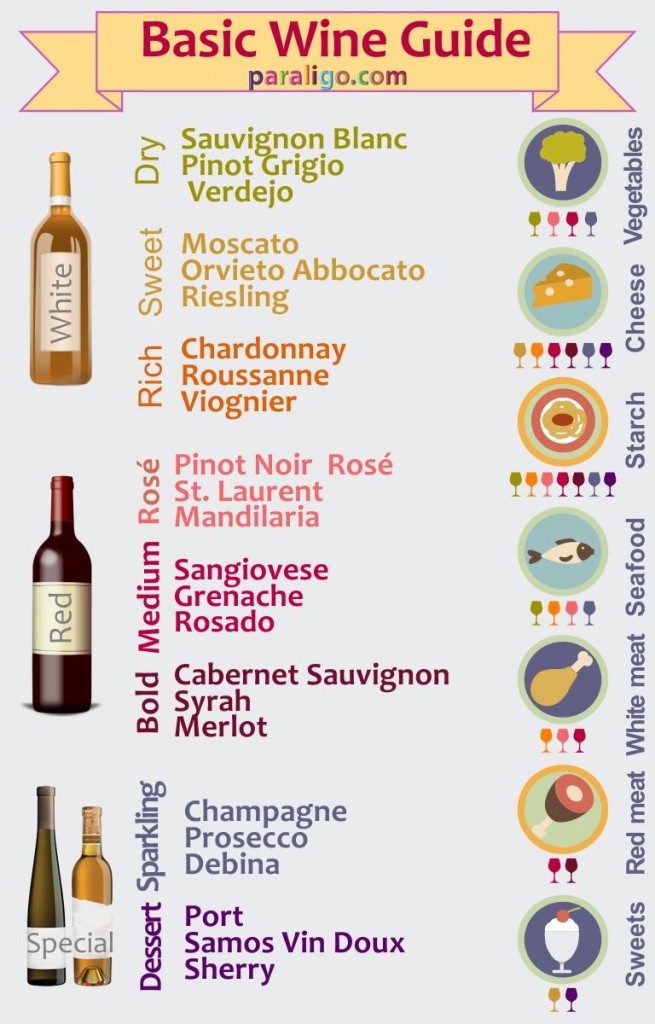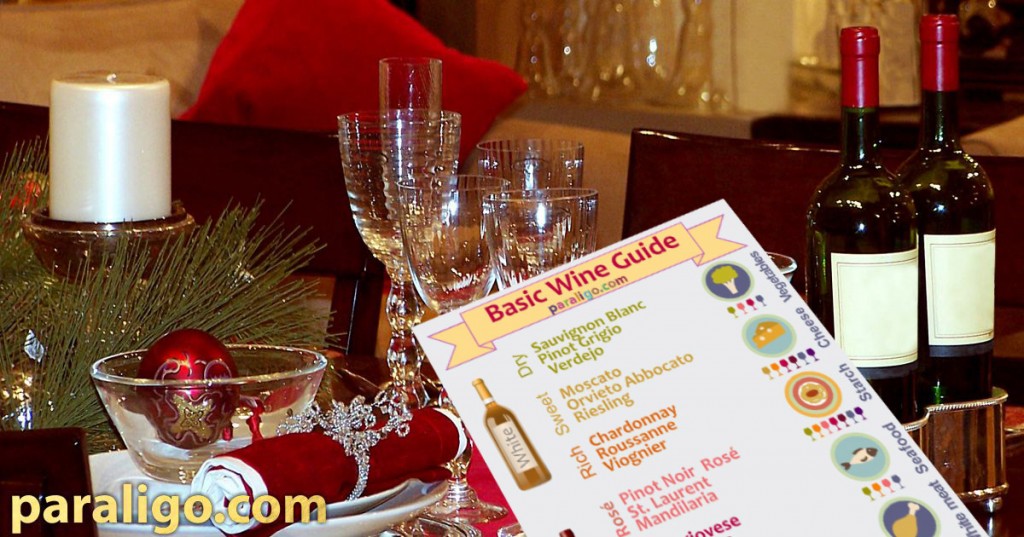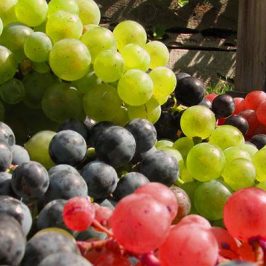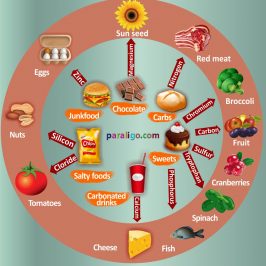Product of creative artistry ready to reveal it‘s mysteries of taste, scent, origin and history at the sound of the cork popping, wine can be the perfect company or perfect for company and definitely a wonderful gift. This basic Wine guide intends to tell you everything you need to know about wine basics.
A bottle of wine is without doubt the ultimate beverage that’s fits every occasion, from Christmas dinner to a hard working days’ night. Our humble Wine guide hopes to be helpfull to each one of these occasions and that is the very reason it was created for.
Grape varieties
There are more than 5.000 wine grape varieties in the world, all descending from two primar grape families. Vitis Vinifera, found in Europe, and Vitis Labrusca found in Canada and United States. Wine can be made from one or more varieties. When a variety is used as the predominant (minimum content of 75% to 85%), the result is a “varietal” wine. There are also “blended” wines not inferior to varietal wines, that are blended from different grape varieties.
Wine names
Wines are named for their grape variety or after the place of cultivation. Laws dictate the minimum percentage of a grape variety that a wine must contain in order to bare the variety’s name. In the European Union that minimum percentage is 85 percent. Most European wines are named for their region as the type of soil, the amount of sunshine or of rain can result to grapes of the same variety having different characteristics from place to place.
 Fundamental wine groups
Fundamental wine groups
Wines can be primarily organized into 5 basic groups. White, Red, Rosé, Sparkling which can be red, white or rosé and dessert or fortified wines, in colors ranging from pale blond to deep tawny. Each of these five groups can contain several different grape varieties and winemaking styles.
White wines
White wines are typically made from white grapes but can also be made from black. They can be dry, off dry, sweet and semisweet. Some of the most popular white wines include Chardonnay, Pinot Grigio, Riesling and Sauvignon Blanc. They should be served at 7-10 °C. They pair with Tuna, salmon, Shellfish, Chicken, Pasta, rich sauces, Asian dishes not too spicy.
Red wines
They are made from black grapes and have a red or blue hue. They can be dry, off dry, sweet and semisweet. They differ from whites in pigmentation and tannin content. Some of the most popular red wines include Beaujolais, Cabernet Sauvignon, Chianti, Merlot, Pinot Noir and Zinfandel. They should be served at 10-18 °C. They pair with Grilled red meat, Beef, Duck, Stews, Pot roast, Soy sauce marinades and Sauces rich in black pepper.
Rosé wines
They are referred as rosé, pink or blush wines. Their color is pink. They are made from black grapes by removing their skin after a few hours of fermentation or by blending together white and red wines. They can be sweet, semisweet or dry. Popular sweet rosés are White Merlot and White Zinfandel, while popular dry rosés are Cinsault and Malbec. They should be served at 7-13 °C. The sweeter ones pair with Lobster, Seared salmon, Tuna, Duck and cheeses such as Camembert and Brie and the dry ones pair with Grilled Chicken, Prosciutto, Spicy Seafood and Pasta.
Sparkling wines
They can be made from all varieties of grapes and they contain carbon dioxide bubbles that occur during fermentation. Champagne is a type of sparkling wine named after a region in northeast France. They can be white, red, or rosé, sweet, semisweet or dry. Some of the most popular sparkling wines are Cava, Champagne, Crémant d’Alsace, Moscato d’Asti and Prosecco. They should be served at 6-11 °C. They pair with Caviar, Smoked salmon, hard Cheeses, Fish and shellfish, Cream sauces, Asian dishes, Salty foods and fruity condiments.
 Dessert wines
Dessert wines
Dessert wines have a high sugar content, making them perfect to serve with or as dessert. Dessert wines can also be fortified by Brandy or other spirits added to the juice during fermentation. Then can be white, tawny, rosé or red. Some of the most popular dessert wines are ice wines, Rieslings, Madeira, Port, Sherry and Sauternes. They should be served at 13-20 °C. They pair with Cheese, Fruit tarts and Chocolate.
Wine descripition
Wine can be described according to aroma or bouquet defining the smell, body attributing the sense of a wine in your mouth, acidity that makes wine feel crisp or soft, flavour intensity, amount of tannins, aftertaste usually referred as finish, frutiness or spiciness, being dry, off-dry, sweet or semisweet, and fermentation conditions that can make it oaky, smoky, toasty etc.
Wine pairing guidelines
Acid likes Acid (Chardonnay with a vinaigrette salad)
Acid likes Fat (Champagne with cheese cake)
Alcohol likes Fat (Ζinfandel with pepper steak)
Bitter likes Fat (Steak with Sangiovese)
Sweet likes Salty (Riesling with Asian foods)
Sweet likes Sweeter (Asti Spumanti with vanilla custard)
International and Greek Wine varieties A-Z
Agiorgitiko, Aidani, Albariño, Aligoté, Amarone, Amorgiano, Arneis, Asti Spumante, Assyrtiko, Asproudes, Athiri, Auslese, Avgoustiatis,Banylus, Barbaresco, Bardolino, Beaujolais Blanc de Blancs, Bekiari, Blanc de Noirs, Boal or Bual, Brunello, Cabernet Franc, Cabernet Sauvignon, Carignan, Carmenere, Cava, Charbono, Champagne, Chardonnay, Châteauneuf-du-Pape, Chenin Blanc, Chianti, Chianti Classico, Claret, Colombard (French Colombard), Constantia, Cortese, Dafni, Debina, Dolcetto, Eiswein, Frascati, Fumé Blanc, Gamay, Gamay Beaujolais, Gattinara, Gewürztraminer, Grappa, Grenache, Johannisberg Riesling, Katsano, Kidonitsa, Kir, Kotsifali, Krassato, Lagorthi, Lambrusco, Liatiko, Liebfraumilch, Limnio, Madeira, Malagouzia, Malbec, Mandilaria, Marc, Marsala, Marsanne, Mavrodafni, Mavrotragano, Mavroudi, Mead, Meritage, Merlot, Monemvasia, Montepulciano, Moscato, Moschofilero, Moshomavro, Mourvedre, Müller-Thurgau, Musca, Negoska, Nebbiolo, Petit Verdot, Petite Sirah, Pinot Blanc, Pinot Grigio/Pinot Gris, Pinot Meunier, Pinot Noir, Pinotage, Plito, Port, Retsina, Robola, Roditis, Roussane, Sangiovese, Sauterns, Sauvignon Blanc, Savatiano, Sémillon, Sherry, Sideritis, Stavroto, Soave,Tokay, Traminer, Trebbiano, Ugni Blanc, alpolicella, Verdicchio, Vertzami, Vilana, Viognier, Vlachiko, Xinomavro, Zinfandel.
This Wine guide means to introduce a beginner to the abyssal yet fabulous world of wine. Please excuse any mistakes or omissions and fell free to comment such ones.







